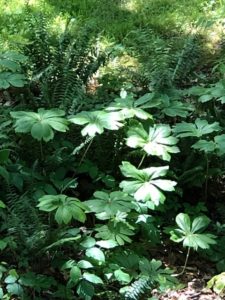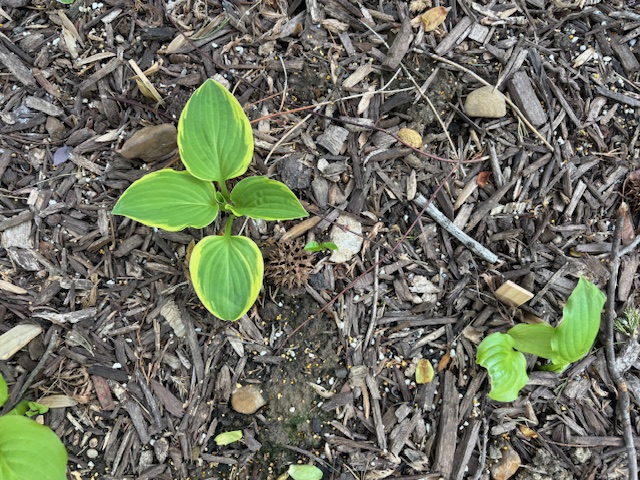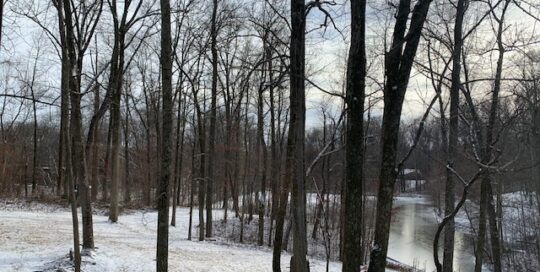Magick Mandrake? Mayapples and Mystery.
Views: 1490

It has been a long, cold and rainy spring – summer is taking its own sweet time about getting here! I don’t know about YOU, but I’m looking forward to complaining about how HOT it is! There are signs of improvement…the redbud trees are blooming, the daffodils have been glorious and are beginning to fade, and…the mayapples have magically appeared. Just two or three days ago, I looked out my window and – poof! – there they were!
What are Mayapples?
Mayapples (Podophyllum peltatum) is also known as ground lemon, Witches Umbrella, American Mandrake and wild mandrake. It’s native through most of the eastern United States and the southeastern part of Canada. This spring ephemeral grows in wooded areas, springing up, as if by Magick, before deciduous trees leaf out. The fruit actually appears in the summer and ripens to a rich yellow color later in the summer.
Although all the plant contains podophyllotoxin and is highly toxic if consumed, it can be used as a topical medicine. Once the actual mayapple fruit ripens, people eat it in small quantities and even use them to make jelly.
Native Americans and herbalists have long used the Mayapple to treat for worms, induce vomiting, and (how shall I say this politely?) as a really, really strong laxative.
Mayapple Folklore
All the folklore surrounding the European mandrake (Mandragora officinarum) have been attributed to our native mayapple. According to legend, the plant screams when pulled out of the ground and the terrible scream causes anyone hearing it to go insane. The European mandrake is a member of the nightshade family Solanaceae and is not related to our native mayapple, although both are toxic and both have historic and current medicinal uses.
Faerie folke use the mayapple as an umbrella when it rains (according to what people told me as a little child). It’s a charming whimsy.
Companion Plants
Mayapples and morel mushrooms enjoy the same growing conditions, so if you like to hunt for morels, look for mayapples. The mayapples in our little woods like the north-facing slope of an intermittent stream, along with the Christmas ferns (Polystichum acrostichoides), another native, woodland plant.
You don’t need to pamper these plants, just leave them alone where they choose to grow – both plants do very well on their own, with the mayapples’ leaves turning yellow as the plant goes dormant in hot, dry weather. In summers when we receive a lot of rain, the mayapples might still be green all the way through August, while the Christmas fern keeps generally stays green up through the holiday season and sometimes all year long in our growing Zone 6b.
For me, at least, the woodland plants are magical enough – no folklore or fairy tales necessary.
Stay Green, Good Friends!
Meet Dona Bergman
Dona Bergman is a founding member, Southwest Indiana Chapter of the Indiana Native Plant & Wildlife Society, and an Advanced Master Gardener.







